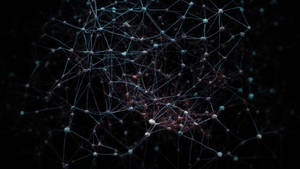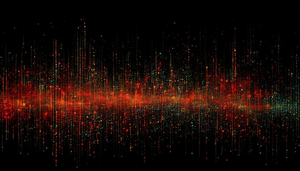Clustering: DBSCAN

DBSCAN (Density-Based Spatial Clustering of Applications with Noise) is a popular clustering algorithm in machine learning. It is particularly useful for identifying clusters of varying shapes and sizes within a dataset, while also being robust to outliers.
Key Concepts:
Density-based approach: Unlike centroid-based algorithms like K-means, DBSCAN defines clusters based on the density of data points. It groups together closely packed points as part of the same cluster.
Core points: A core point is a data point that has a minimum number of other points (specified by
minPts) within its neighborhood radius (eps). These form the backbone of clusters.Border points: Border points lie within the neighborhood of core points but do not have enough neighbors to be considered core themselves. They are included in the cluster associated with their neighboring core point.
Noise or outlier points: Points that are neither core nor border points are classified as noise or outliers.
How DBSCAN Works:
Parameter selection: The two main parameters in DBSCAN are
eps(the maximum distance between two samples for them to be considered in the same neighborhood) andminPts(the minimum number of data points required to form a dense region).Algorithm steps:
- Randomly select an unvisited data point.
- If it is not already assigned to a cluster:
- Compute its neighborhood using
eps. - If it has at least
minPtsneighbors, start expanding this into a new cluster. - Continue recursively until all density-reachable points are added.
- Compute its neighborhood using
Cluster formation:
- Core point classification: Any point with at least
minPtsneighbors within distanceepsbecomes a core point. - Cluster expansion: Expand each core point's cluster by visiting all reachable neighbors, assigning them to the same cluster if possible.
- Core point classification: Any point with at least
Handling noise:
- Outliers: Points that do not belong to any existing clusters after all iterations will be classified as noise/outliers.
Advantages:
- Can discover clusters of arbitrary shapes and sizes.
- Robust against noise and outliers due to its density-based nature.
- Does not require specifying the number of clusters beforehand.
Limitations:
- Sensitivity to parameter selection, especially for determining appropriate values for
epsandminPts. - Tendency towards forming only one large cluster when there are varying densities in different regions.
Overall, DBSCAN is a versatile clustering algorithm suited for applications where traditional methods may struggle, particularly when dealing with complex datasets containing irregularly shaped clusters or noisy observations.
Sponsored
Sponsored
Sponsored
Explore More:

Model Evaluation and Selection
Topic model evaluation and selection are crucial steps in the process of building...

Feature Engineering
Feature engineering is the process of selecting, creating, and transforming features (inputs) in...

Natural Language Processing (NLP)
Natural Language Processing (NLP) is a subfield of artificial intelligence that focuses on...

Neural Networks and Deep Learning
Neural networks are a class of algorithms modeled after the human brain's neural...

Reinforcement Learning
Reinforcement learning is a branch of machine learning concerned with how intelligent agents...

Dimensionality Reduction: Autoencoders
Autoencoders are a type of artificial neural network used for learning efficient representations...

Dimensionality Reduction: Factor Analysis
Factor analysis is a powerful technique used in the field of machine learning...

Dimensionality Reduction: Independent Component Analysis (ICA)
Independent Component Analysis (ICA) is a dimensionality reduction technique commonly used in machine...

Dimensionality Reduction: t-Distributed Stochastic Neighbor Embedding (t-SNE)
Dimensionality reduction is a fundamental technique in machine learning and data visualization that...

Dimensionality Reduction: Principal Component Analysis (PCA)
Principal Component Analysis (PCA) is a popular dimensionality reduction technique used in machine...

Unsupervised Learning: Dimensionality Reduction
Unsupervised learning dimensionality reduction is a crucial concept in machine learning that deals...

Clustering: Gaussian Mixture Models
Clustering is a fundamental unsupervised learning technique used to identify inherent structures in...

Clustering: Hierarchical Clustering
Hierarchical clustering is a popular unsupervised machine learning technique used to group similar...

Clustering: K-Means
Clustering is an unsupervised machine learning technique that aims to partition a set...

Unsupervised Learning: Clustering
Unsupervised learning clustering is a fundamental concept in machine learning that involves identifying...

Unsupervised Learning
Unsupervised learning is a type of machine learning where the model is trained...